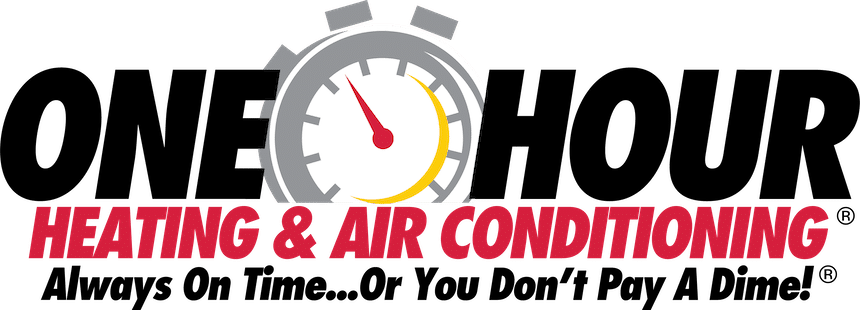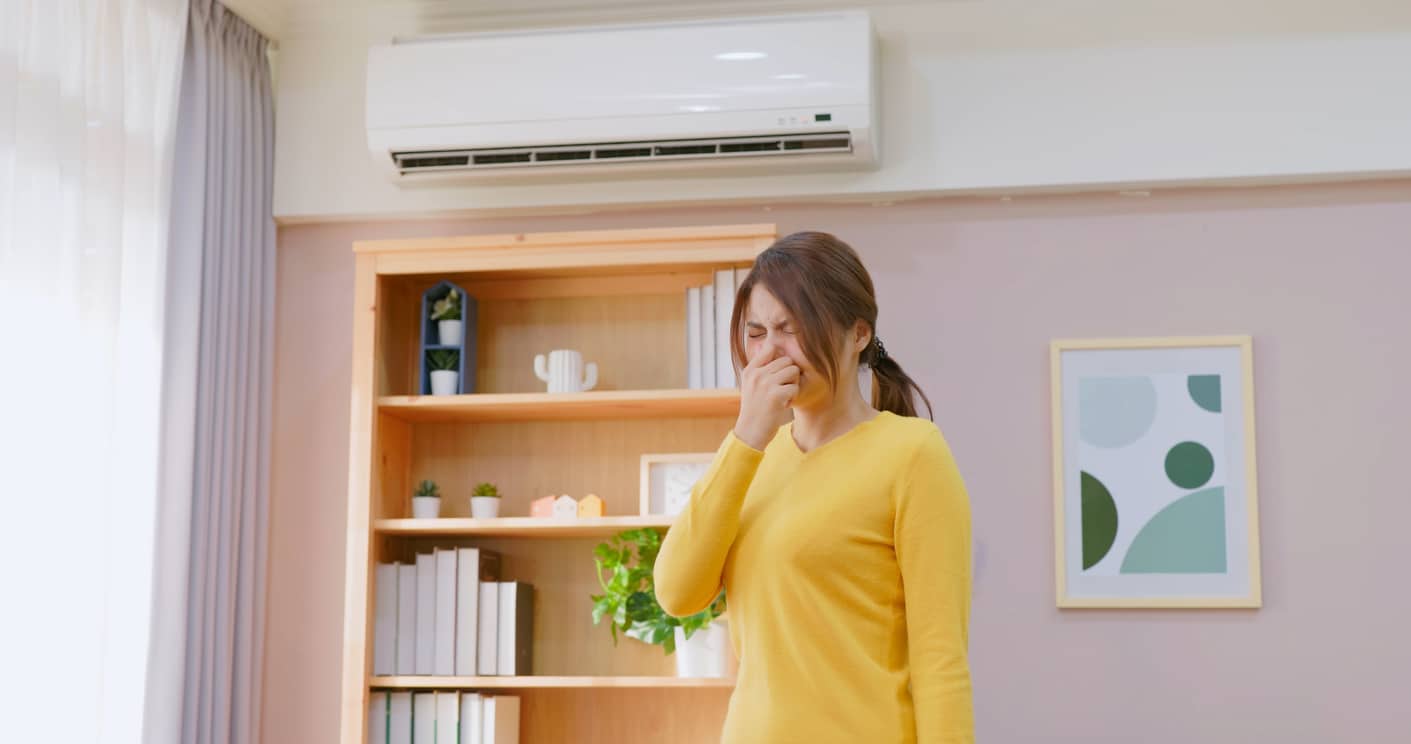Are you struggling with mold issues in your home?
Mold is a common problem for many homeowners, often leading to health concerns and structural damage. Understanding how to combat mold is essential for maintaining a healthy living environment. One effective way to prevent mold growth is by utilizing your HVAC system.
Mold thrives in damp, humid environments. It can spread quickly, damaging walls, ceilings, and floors, while also posing serious health risks, especially for those with allergies or respiratory issues.
That’s where your HVAC system comes into play. HVAC systems are not only designed to regulate temperature but also to manage humidity and improve indoor air quality, making them a key player in mold prevention.
In this article, we’ll delve deeper into the relationship between mold and HVAC systems. We’ll explore how mold develops, the health risks associated with it, and how your HVAC system can help prevent these issues.
Overview of Mold Issues in Homes
Mold is a pervasive issue in many homes, often resulting in unsightly stains, unpleasant odors, and significant health risks. Mold spores are everywhere, and under the right conditions, they can quickly multiply. This is especially true in areas with high humidity or poor ventilation, such as bathrooms, basements, and kitchens.
One of the main reasons mold is such a common problem is due to the typical conditions found in homes. Moisture from cooking, bathing, and even breathing can accumulate, creating an ideal environment for mold growth. Leaky pipes, roofs, and windows further exacerbate the problem, providing a continuous source of moisture for mold to thrive.
The importance of HVAC systems in mold prevention cannot be overstated. HVAC systems help regulate indoor temperature and humidity levels, which are crucial factors in mold growth. By maintaining these conditions, HVAC systems create an environment that is less hospitable to mold. Additionally, HVAC systems help improve indoor air quality by filtering out mold spores and other pollutants.
Understanding Mold: Causes and Health Impacts
Why does mold grow in homes, and how does it affect our health? Mold growth in homes is primarily caused by excess moisture. This can come from various sources, including leaky roofs, broken pipes, high humidity, and poor ventilation. When these conditions persist, mold spores, which are always present in the air, find the perfect breeding ground and begin to multiply.
Common causes of mold growth include:
- Water leaks: Leaky pipes, roofs, and windows provide a steady source of moisture.
- Humidity: High humidity levels, especially in areas like bathrooms and basements, promote mold growth.
- Poor ventilation: Inadequate air circulation can trap moisture, creating a damp environment.
- Flooding: After flooding, homes are particularly susceptible to mold due to the lingering moisture.
Health risks associated with mold exposure are significant. Mold produces allergens, irritants, and in some cases, toxic substances called mycotoxins. Exposure to mold can lead to various health problems, especially for individuals with allergies, asthma, or weakened immune systems. Common health issues caused by mold include:
- Respiratory problems: Coughing, wheezing, and throat irritation.
- Allergic reactions: Sneezing, runny nose, and skin rashes.
- Asthma attacks: Mold can trigger asthma symptoms in sensitive individuals.
- Chronic fatigue: Prolonged exposure to mold can lead to persistent fatigue and headaches.
The Role of HVAC Systems in Mold Prevention
Did you know your HVAC system is a key player in preventing mold? HVAC systems do much more than just control temperature. They also play a crucial role in managing indoor humidity and improving air quality, both of which are essential in mold prevention.
How HVAC systems help control mold:
- Humidity control: One of the main functions of HVAC systems is to regulate indoor humidity levels. Mold thrives in environments where humidity exceeds 60%. By keeping your home’s humidity between 30% and 50%, HVAC systems make it difficult for mold to grow.
- Ventilation: Proper ventilation is vital for reducing moisture levels in the air. HVAC systems ensure continuous airflow, which helps to prevent the accumulation of damp air in enclosed spaces.
- Air filtration: HVAC systems are equipped with filters that capture mold spores and other airborne particles, reducing the number of spores that can settle and grow inside your home.
Key components of HVAC systems for mold prevention:
- Dehumidifiers: These are essential for removing excess moisture from the air. Many HVAC systems come with built-in dehumidifiers, or they can be added as standalone units.
- Air purifiers: These devices help to clean the air by removing mold spores and other allergens. HEPA filters are particularly effective at trapping tiny particles.
- Proper ductwork: Well-maintained ductwork ensures that air circulates efficiently throughout your home, preventing pockets of moisture that can lead to mold growth.
Identifying Mold Problems in Your Home
How can you tell if mold is growing in your home? Identifying mold early is crucial to prevent extensive damage and health risks. Mold often hides in places you can’t easily see, making detection challenging. However, there are clear signs to watch for.
Signs of mold growth:
- Musty odors: A persistent, musty smell is often the first indicator of mold. If you notice this smell in a specific area, it’s time to investigate further.
- Visible mold: Mold can appear as black, green, or white spots on walls, ceilings, or floors. It often starts in damp, dark places like bathrooms and basements.
- Water damage: Stains, discoloration, and peeling paint or wallpaper are signs of moisture problems that can lead to mold growth.
- Health symptoms: Unexplained respiratory issues, allergies, or skin irritation in household members can be linked to mold exposure.
Areas prone to mold development:
- Bathrooms: With high humidity from showers and baths, bathrooms are prime spots for mold. Check around sinks, toilets, and in tile grout.
- Kitchens: Leaks under sinks, around refrigerators, and in dishwashers can create a perfect environment for mold.
- Basements: Often damp and poorly ventilated, basements are common places for mold. Look for signs on walls, floors, and near sump pumps.
- Attics: Roof leaks or poor ventilation in attics can lead to mold on insulation, rafters, and other surfaces.
- Laundry rooms: Washing machines and dryers can cause humidity and leaks, promoting mold growth in these areas.
Early detection is vital. By keeping an eye out for these signs and knowing where mold is likely to grow, you can address mold problems before they become severe. Using your HVAC system to control moisture and maintain good air circulation can help prevent these issues.
Importance of Regular HVAC Maintenance
Did you know that regular HVAC maintenance is crucial for mold prevention? Maintaining your HVAC system not only ensures its efficiency but also plays a key role in preventing mold growth. Regular upkeep keeps the system running smoothly, controls humidity, and maintains air quality.
How maintenance prevents mold:
- Consistent humidity control: Regularly serviced HVAC systems maintain optimal humidity levels. This prevents the damp conditions that mold needs to thrive.
- Clean filters: Changing HVAC filters regularly removes mold spores and other particles from the air, reducing the chance of them settling and growing.
- Efficient airflow: Well-maintained HVAC systems ensure proper ventilation. This prevents stagnant air pockets where mold can grow.
- Detecting leaks early: Routine inspections can identify and fix leaks in the system that might otherwise lead to mold.
Recommended maintenance schedule:
- Monthly tasks: Check and replace filters if they are dirty. Ensure there are no obstructions around the outdoor unit.
- Seasonal tasks: Inspect and clean the coils, drain pans, and drainage lines to prevent moisture buildup. Check the refrigerant levels and top up if necessary.
- Annual tasks: Have a professional HVAC technician perform a thorough inspection. This should include checking for leaks, cleaning all components, and ensuring the system operates efficiently.
HVAC System Features for Mold Control
Wondering how your HVAC system can better prevent mold? Modern HVAC systems come equipped with features specifically designed to control humidity and improve air quality, making them powerful tools in the fight against mold.
Key HVAC system features for mold control:
- Humidity control systems:
- Dehumidifiers: Integrated or standalone dehumidifiers are essential for maintaining ideal indoor humidity levels. By keeping humidity between 30% and 50%, these devices prevent the damp conditions that mold needs to thrive.
- Humidistats: These sensors monitor and adjust humidity levels automatically, ensuring a consistent indoor environment that’s less conducive to mold growth.
- Air purifiers and filters:
- HEPA filters: High-Efficiency Particulate Air (HEPA) filters are highly effective at trapping mold spores and other airborne particles. This reduces the number of spores in the air, minimizing the risk of mold spreading.
- UV lights: Ultraviolet lights installed within the HVAC system can kill mold spores and bacteria on contact, preventing them from circulating through your home.
- Activated carbon filters: These filters remove volatile organic compounds (VOCs) and odors, improving overall air quality and reducing the potential for mold growth.
- Ventilation solutions:
- Energy Recovery Ventilators (ERVs): ERVs provide fresh air while maintaining indoor humidity levels, ensuring your home remains well-ventilated without becoming too humid or dry.
- Exhaust fans: Properly placed exhaust fans in areas prone to moisture, such as bathrooms and kitchens, help expel humid air and reduce the risk of mold.
By leveraging these advanced features, you can significantly enhance your HVAC system’s ability to control mold. Ensuring your system includes these components and is properly maintained will create a healthier, mold-resistant home environment.
Best HVAC Practices in Bluffton
Living in Bluffton and concerned about mold? The local climate in Bluffton, with its warm temperatures and high humidity, can be a breeding ground for mold. However, by following some best practices for HVAC use, you can effectively manage and prevent mold growth in your home.
Local climate considerations:
- High humidity: Bluffton experiences high humidity levels, especially in the summer. This makes controlling indoor moisture a priority.
- Temperature fluctuations: With hot summers and mild winters, maintaining a consistent indoor environment is key to preventing mold.
Tips for homeowners in Bluffton:
- Regular HVAC maintenance: Schedule professional HVAC inspections at least twice a year, ideally before the summer and winter seasons. This ensures your system is prepared to handle the extremes of Bluffton’s climate.
- Use a dehumidifier: Given Bluffton’s humidity, a dehumidifier is essential. Install a whole-house dehumidifier or use portable units in high-moisture areas to maintain optimal humidity levels.
- Seal leaks: Check for and seal any leaks in your home’s exterior, including around windows and doors. This prevents humid outdoor air from entering and raising indoor moisture levels.
- Ventilate properly: Use exhaust fans in bathrooms and kitchens to expel humid air. Consider installing an Energy Recovery Ventilator (ERV) to improve overall ventilation while maintaining humidity control.
- Monitor indoor humidity: Use a hygrometer to keep track of your home’s humidity levels. Aim to keep it between 30% and 50% to deter mold growth.
- Clean filters regularly: Replace HVAC filters every 1-3 months, or more frequently during heavy use periods. Clean filters ensure better air circulation and remove mold spores from the air.
- Install UV lights: Adding UV lights to your HVAC system can kill mold spores and bacteria, preventing them from spreading through your home’s air ducts.
Best HVAC Practices in Hilton Head
Facing mold issues in Hilton Head’s humid environment? Hilton Head, like other parts of the Lowcountry, deals with high humidity and warm temperatures that can lead to mold problems. Implementing the right HVAC practices can make a significant difference.
Local climate considerations:
- High humidity: Hilton Head’s coastal climate means high humidity levels year-round.
- Warm temperatures: The island’s warm climate, especially during summer, requires effective temperature and humidity control.
Tips for homeowners in Hilton Head:
- Routine HVAC maintenance: Schedule HVAC maintenance twice a year, focusing on pre-summer and pre-winter checks. This helps ensure your system runs efficiently and can handle the climate’s demands.
- Install a dehumidifier: Use a whole-house dehumidifier to manage indoor humidity. Keeping humidity levels between 30% and 50% is crucial in Hilton Head’s humid climate.
- Ensure proper ventilation: Use exhaust fans in moisture-prone areas like bathrooms and kitchens. Consider an Energy Recovery Ventilator (ERV) to improve air circulation while managing humidity.
- Seal leaks: Inspect your home for leaks, especially around windows, doors, and attics. Sealing these can prevent humid air from entering and raising indoor moisture levels.
- Monitor indoor humidity: Use a hygrometer to regularly check your home’s humidity levels. Adjust your HVAC settings or use additional dehumidifiers to maintain the ideal range.
- Replace HVAC filters: Change HVAC filters every 1-3 months, especially during peak usage times. Clean filters are essential for effective air circulation and mold prevention.
- Add UV lights: Installing UV lights in your HVAC system can help eliminate mold spores and bacteria, preventing them from circulating through your home’s air ducts.
- Use programmable thermostats: Programmable thermostats can help maintain a consistent indoor environment by automatically adjusting temperature and humidity settings based on the time of day and occupancy.
By adopting these HVAC practices, you can effectively manage Hilton Head’s unique climate challenges and prevent mold growth in your home. Proper HVAC maintenance and humidity control are key to creating a healthy and comfortable living environment on the island.
Upgrading Your HVAC System for Better Mold Control
Thinking about upgrading your HVAC system to combat mold more effectively? Modern HVAC systems come with advanced features that significantly enhance mold prevention. Upgrading your system can provide better humidity control, improved air quality, and overall efficiency.
Latest technologies in HVAC systems:
- Variable-speed air handlers: These systems adjust the airflow based on your home’s needs, providing consistent temperature and humidity control. This helps prevent the conditions that allow mold to thrive.
- Smart thermostats: Smart thermostats enable precise control over your HVAC system. They can adjust settings based on humidity levels and occupancy, optimizing indoor conditions to deter mold growth.
- Enhanced filtration systems: Upgrading to HEPA filters and air purifiers with UV lights can significantly reduce mold spores and other allergens in your home. These advanced filters capture smaller particles and ensure cleaner air circulation.
- Integrated dehumidifiers: Modern HVAC systems can include built-in dehumidifiers, which work seamlessly with your system to maintain optimal humidity levels. These integrated systems are more efficient than standalone units.
- Energy Recovery Ventilators (ERVs): ERVs provide balanced ventilation by exchanging indoor and outdoor air while maintaining humidity control. This prevents excess moisture buildup and improves overall air quality.
When to consider an upgrade:
- Frequent repairs: If your current HVAC system requires frequent repairs, it might be more cost-effective to upgrade to a new, more reliable system.
- Inefficient performance: Older systems that struggle to maintain consistent temperature and humidity levels can contribute to mold problems. An upgrade can offer better efficiency and control.
- Poor air quality: If you notice persistent mold issues, musty odors, or increased allergy symptoms, your current HVAC system might not be effectively filtering the air. Newer systems with advanced filtration can help.
- High energy bills: An outdated HVAC system can be less energy-efficient, leading to higher utility bills. Modern systems are designed to be more efficient, saving you money in the long run.
Upgrading your HVAC system can be a worthwhile investment in mold prevention and overall home comfort. By taking advantage of the latest technologies, you can ensure a healthier indoor environment and protect your home from mold-related issues.

Frequently Asked Questions
- How often should I maintain my HVAC system to prevent mold? Regular maintenance is crucial for mold prevention. Schedule professional HVAC inspections twice a year, typically in the spring and fall. Additionally, check and replace filters every 1-3 months and clean your system’s components as needed.
- Can a dehumidifier really help prevent mold? Yes, dehumidifiers are highly effective in controlling indoor humidity, which is essential for mold prevention. By keeping humidity levels between 30% and 50%, dehumidifiers create an environment that is less conducive to mold growth.
- What are the signs that my HVAC system might be contributing to mold growth? Signs include a persistent musty odor, visible mold around vents, increased allergy symptoms, and inconsistent temperature or humidity control. If you notice these signs, it’s important to have your HVAC system inspected and cleaned.
- Are UV lights in HVAC systems effective against mold? UV lights are effective in killing mold spores and other microorganisms in the HVAC system. By installing UV lights, you can reduce the spread of mold spores through your air ducts, improving overall air quality.
- Should I consider upgrading my HVAC system for better mold control? Upgrading your HVAC system can be beneficial if your current system is outdated, inefficient, or requires frequent repairs. Modern systems with advanced features like variable-speed air handlers, smart thermostats, and enhanced filtration can significantly improve mold prevention.











